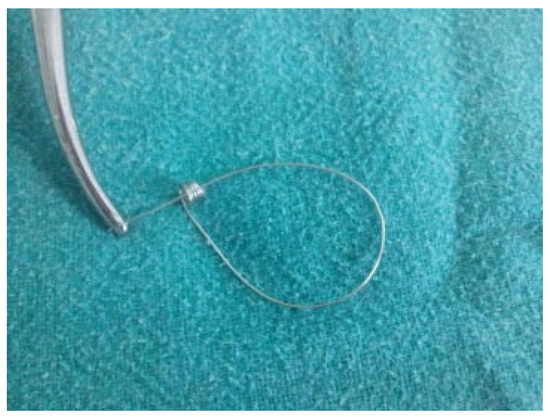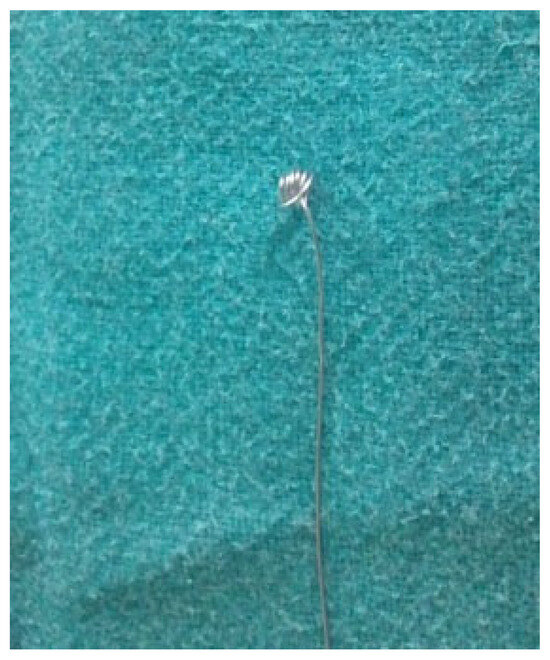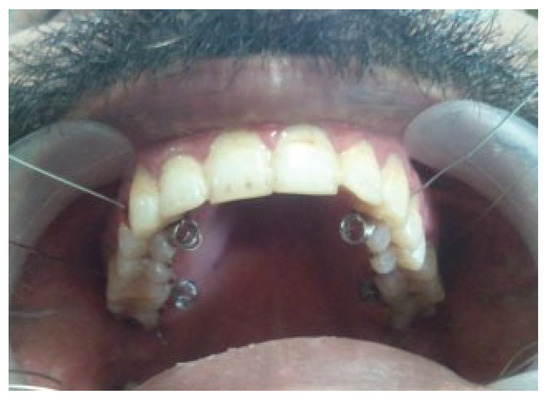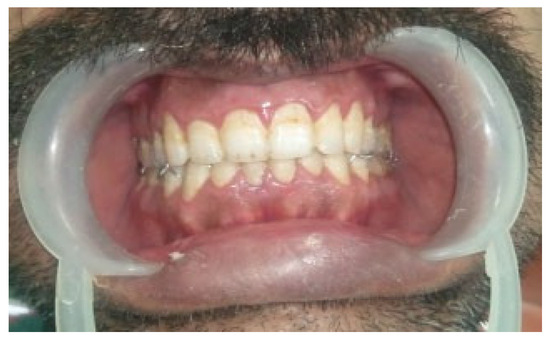Abstract
Intermaxillary fixation (IMF) remains an important component in the management of many facial fractures. During IMF, dental occlusion plays an important role as a guide and therapeutic tool. Since time immemorial there is a constant quest of oral and maxillofacial surgeons to find a quick way for IMF. The desire to develop an alternate interdental fixation technique, which not only would decrease the risk to the operator and gingival trauma but also accurately satisfy dental occlusion, lead to the development of this novel technique of “spiral IMF”.
The treatment of maxillofacial fractures usually requires control of dental occlusion with the application of wires/arch bars for interdental wiring to orient and stabilize the fracture. According to the literature, there are a variety of methods for achieving stable intermaxillary fixation (IMF) such as Bone screws [1], Rapid IMF [2], Ulster hook [3], Otten minihooks [4], Ernst ligatures, Ivy loops, Embrasure wires, etc., but they have certain shortcomings such as risk of wire puncture wound, damage to teeth, technique sensitivity, laboratory work, and cost involved.
This article explains a simple and quick technique of IMF termed spiral IMF which can be primarily used for non/minimally displaced fractures of mandible.
This technique makes use of six evenly spaced spiraled wires (three in each maxilla and mandible). Six prestretched 24-gauge wires are taken. One end of each wire is held within the tip of the beaks of small artery forceps. Then the wire is wound around the tip of the instrument four of five times. This leads to formation of a spiral through which the other end of the wire is taken out to lock the spiral (Figure 1). Similarly, other spiral wires are prepared. Interdental spaces with tight embrasures, of upper and lower corresponding posterior teeth (most commonly between first and second molars) on both sides and anterior pair of teeth (between central incisors), are chosen. The open end of the wire is inserted from palatal/lingual side of interdental space between two pairs of teeth and taken out buccally so that spiral end engages the palatal/lingual embrasures (Figure 2 and Figure 3). Once all six wires are passed, then the upper and lower wire ends are twisted together to achieve IMF (Figure 4).

Figure 1.
Spiral wire being locked.

Figure 2.
Spiral wire prepared.

Figure 3.
The final positioning of spiral wires in maxilla. Spiral wires are placed in mandible and then the free end of both (maxillary and mandibular) wires are tightened to achieve IMF.

Figure 4.
Intermaxillary fixation achieved.
Advantage with this technique is that there is no requirement of any custom-made appliance or laboratory work and can be made at the time of the procedure. It is simple, quick, and economical. The number of wires and size of spiral can be varied depending on the type of fracture and embrasure space, respectively. As less number of wires is used in this technique, hence the incidence of needle stick injury and gingival trauma also decreases as compared with arch bars.
However, the authors have found that there are certain drawbacks pertaining to this technique, for example, if one set of upper and lower wires breaks while twisting, then all the wires need to be released and redone. Another disadvantage is that it cannot be used in displaced mandibular fractures.
This unusual technique is an attempt to find an easy and faster method of IMF in non/minimally displaced fractures.
Acknowledgment
Conflict of interest: None
Sources of Funding: None
References
- Roccia, F.; Tavolaccini, A.; Dell’Acqua, A.; Fasolis, M. An audit of mandibular fractures treated by intermaxillary fixation using intraoral cortical bone screws. J Craniomaxillofac Surg 2005, 33, 251–254. [Google Scholar] [PubMed]
- Cousin GCS. Wire-free fixation of jaw fractures. Br J Oral Maxillofac Surg 2009, 47, 521–524. [Google Scholar]
- Ramsay-Baggs, P. The Ulster hook for intermaxillary fixation. Br J Oral Maxilllofac Surg 2011, 49, 324–325. [Google Scholar] [CrossRef] [PubMed]
- Koulocheris, P.; Sakkas, N.; Otten, J.E. Maxillomandibular fixation with Otten mini-hooks. Br J Oral Maxillofac Surg 2007, 45, 679–680. [Google Scholar] [CrossRef] [PubMed]
© 2012 by the author. The Author(s) 2012.